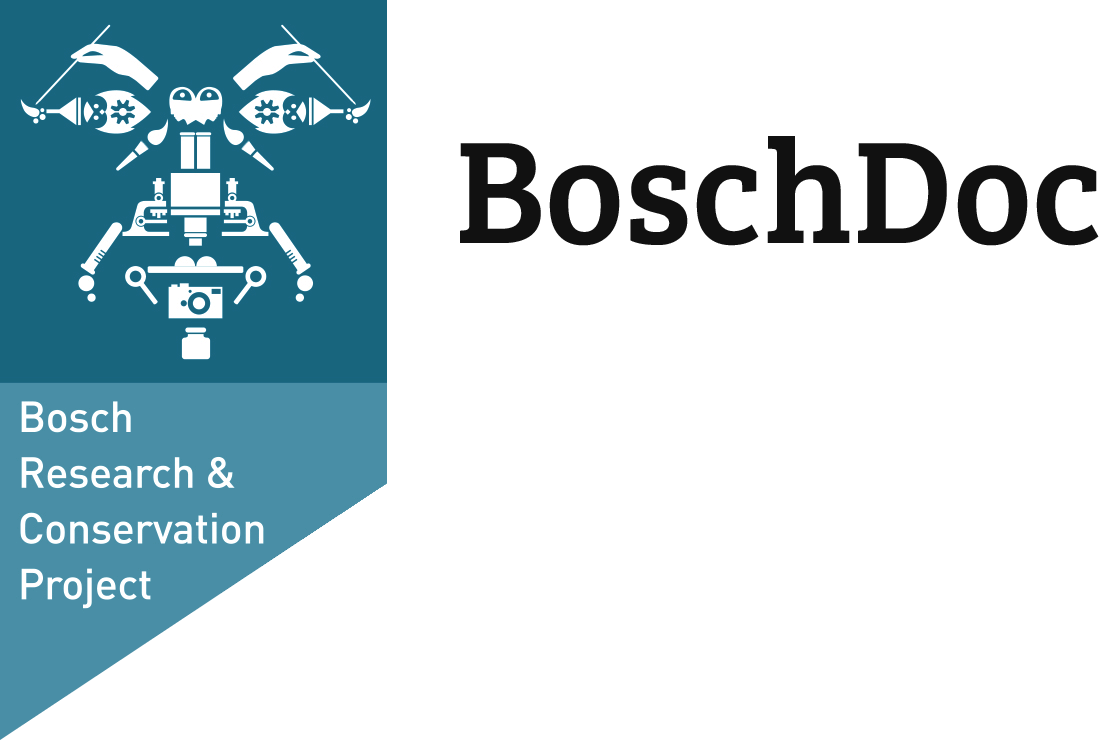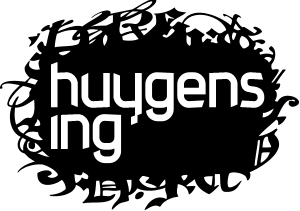Methods
Het overgrote deel van de in BoschDoc opgenomen documenten is handgeschreven. Vaak gaat het om vlug gemaakte aantekeningen of om kladversies van een definitieve tekst. De documenten zijn daardoor niet altijd even goed leesbaar. Om deze handgeschreven teksten toch toegankelijk te maken zijn ze getranscribeerd. Hierbij is een aantal regels gehanteerd:
- De in het Latijn geschreven korte en lange i (respectievelijk i en j) zijn beide als i getranscribeerd; de dubbele i (ii en ij) als ii.
- De ij is getranscribeerd als y, tenzij deze in de originele tekst voorzien is van puntjes, dan is deze getranscribeerd als ij.
- De korte en lange s zijn getranscribeerd als s.
- Bij Middelnederlandse en Latijnse teksten zijn de u, v, uu, vv en w indien het klinkers betreft getranscribeerd als u of uu. Indien zij medeklinkers weergeven zijn zij getranscribeerd als v of w. Bij de Spaanse teksten zijn de u, v en b getranscribeerd zoals zij zijn geschreven.
- Hoofdletters en kleine letters zijn in de transcripties genormaliseerd naar hedendaags gebruik in de Nederlandse taal.
- Spatiëringen zijn genormaliseerd naar hedendaags gebruik in de Nederlandse taal en enkele leestekens zijn toegevoegd. Een indeling in alinea’s is toegevoegd wanneer dit de overzichtelijkheid van de tekst ten goede komt.
- Afkortingen zijn opgelost. De aangevulde tekens zijn cursief weergegeven.
- Ontbrekende passages zijn, wanneer exact duidelijk is wat ontbreekt, tussen vierkante haken toegevoegd.
- Correcties en toevoegingen geschreven tussen de regels of in de marge zijn op de betreffende plek toegevoegd en worden gesignaleerd in annotaties.
- Tekstopmaken, zoals vetgedrukt en cursief, zijn genormaliseerd naar hedendaags gebruik.
Voor de in BoschDoc opgenomen gedrukte teksten gelden bovenstaande transcriptieregels niet. Bij het transcriberen van drukwerk is de originele schrijfwijze aangehouden. Enkel de tekstopmaak is aangepast aan hedendaags gebruik.
De vertalingen van de documenten zijn zo letterlijk mogelijk. Wanneer het voor de leesbaarheid wenselijk was om woorden in de vertaling toe te voegen, zijn deze toevoegingen tussen vierkante haken weergegeven. Voor persoonsnamen wordt de schrijfwijze uit het document gevolgd. Een geüniformeerde schrijfwijze is in de annotaties opgenomen. De namen van heiligen, bijbelse en historische figuren zijn wel gestandaardiseerd naar de hedendaagse schrijfwijze.
Wanneer er een kunsthistorisch thema in een document vermeld wordt is hiervan tevens een geüniformeerde variant in de annotaties opgenomen. Indien er werk van Bosch is overgeleverd waarop een dergelijk thema te zien is, is er een link naar dit werk in de beelddatabank van het Bosch Research Conservation Project toegevoegd.
ENG
The great majority of the documents to be found in BoschDoc are handwritten. Often they are rapidly made notes or drafts of a definitive text. This means that they are not always very legible. In order to make these handwritten texts accessible they have been transcribed. A number of rules have been followed in doing so:
- The short and long i (respectively i and j) in Latin are both transcribed as i; the double i (ii and ij) as ii.
- ij is transcribed as y unless they are dotted in the original text; in that case they are transcribed as ij.
- The short and long s are transcribed as s.
- In Middle Dutch and Latin texts u,v, uu, vv, and w, if they are vowels are transcribed as u or uu. If they are consonants they are transcribed as v or w. In Spanish texts the u, v and b are transcribed as they are written.
- Capitals and small letters in the transcriptions are normalised according to present day use in the Dutch language.
- Spaces are normalised according to present day use in the Dutch language and a number of punctuation signs have been added. Division into paragraphs has been done when this increased the clarity of the text.
- Abbreviations have been expanded. The added characters are in italics.
- Missing passages, when it is clear what is missing, are added between square brackets.
- Corrections and additions to the text written between the lines or in the margin are added in the appropriate place and are shown in the notes.
- Layout features such as bold or italic are normalised according to present day usage.
These rules do not apply to printed texts included in BoschDoc. The original features of the text are retained in the transcription of printed works. Only the layout is adapted according to present day usage.
The translations of the documents are as literal as possible. When it seemed desirable to add words in translations these additions are given in square brackets. The spelling of personal names is as in the original. A uniform spelling is added in the notes. The names of saints, biblical and historical figures have been standardised according to present day spelling.
When an art historical theme is mentioned in a document, again a uniform version is used in the notes. If there is a surviving work by Bosch in which the theme is to be found, a link to this work in the image bank of the Bosch Research Conservation Project is given.
ESP
La gran mayoría de los documentos incorporados en BoschDoc son manuscritos. A menudo se trata de apuntes rápidos o borradores de un texto definitivo. Por tal razón los documentos no siempre son tan claramente legibles. A fin de hacerlos accesibles de alguna manera estos textos han sido transcritos. En la transcripción se han aplicado los siguientes criterios:
- En lo escrito en latín la i corta y la i larga (i y j respectivamente) ambas se transcriben como i ; la i doble (ii y ij) se transcribe como ii.
- La ij se transcribe como y, a no ser que ésta esté provista de puntitos en el texto original; entonces se transcribe como ij.
- La s corta y la s larga se transcriben como s.
- En textos neerlandeses medievales y textos latinos las letras u, v, uu, vv y w se transcriben como u o uu en el caso de ser vocales. En el caso de que representen consonantes se transcriben como v o w. En textos españoles la u, la v y la b se transcriben tal como están escritas.
- Mayúsculas y minúsculas en las transcripciones se adaptan a las normas de uso del neerlandés contemporáneo.
- Los espaciados se adaptan a las normas de uso del neerlandés contemporáneo y se añaden algunos signos de puntuación. Se añade una división en párrafos siempre que es favorable para mayor claridad del texto.
- Se resuelven las abreviaturas mediante la representación en cursiva de las letras completadas.
- Pasajes que faltan, y solamente cuando queda exactamente claro lo que falta, se añaden entre corchetes cuadrados.
- Correcciones y adiciones escritas entre los renglones o al margen se añaden en el lugar respectivo y se señalan en anotaciones.
- Tipografías como negrita y cursiva se adaptan a las normas de uso contemporáneas.
Los susodichos criterios de transcripción no se aplican a los textos impresos que están incorporados en BoschDoc. En la transcripción de textos impresos se mantiene la ortografía original, y sólo el formato se adapta al uso contemporáneo.
Las traducciones de los documentos tratan de tener en cuenta la mayor literalidad posible. A exigirlo la legibilidad se añaden palabras representando estas adiciones entre corchetes cuadrados. En el caso de nombres propios se mantiene la ortografía respectiva del documento. La ortografía uniformada se incluye en las anotaciones. Los nombres de santos, personas bíblicas e históricas sí se estandardizan según la ortografía contemporánea.
Al mencionarse en un documento un tema específico de la historia del arte éste también repercute en las anotaciones en la forma de una variante uniformada. En caso de existir una obra de El Bosco en que se transmite tal tema se añade un enlace hacia esta obra en el banco de imágenes del Bosch Research Conservation Project.



